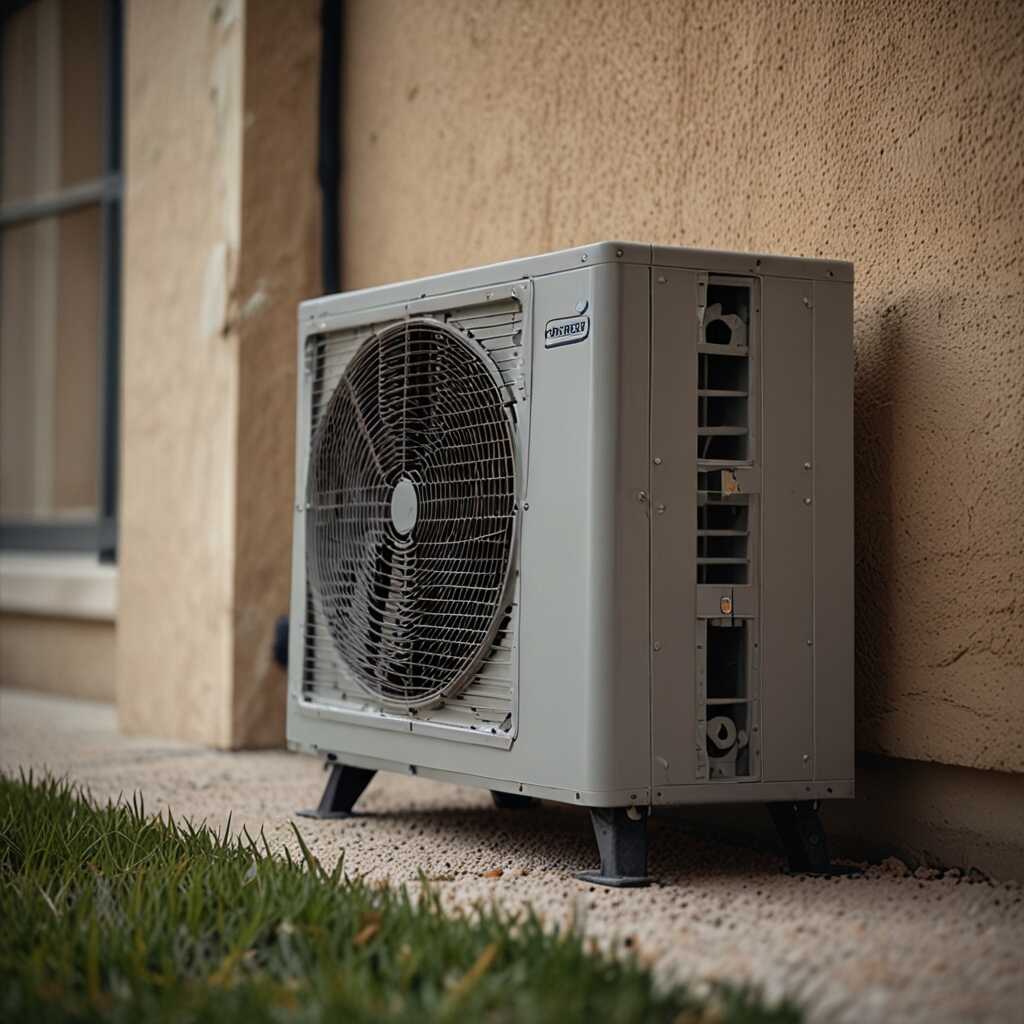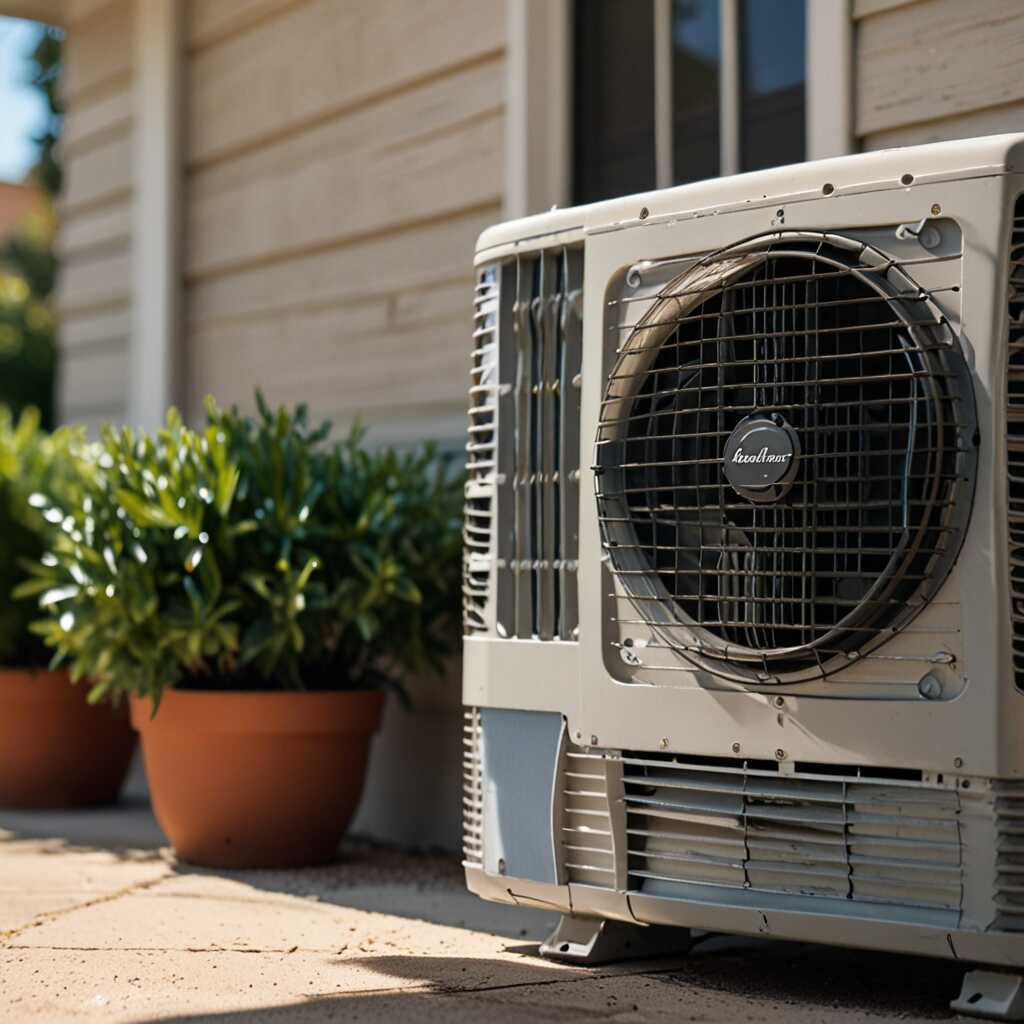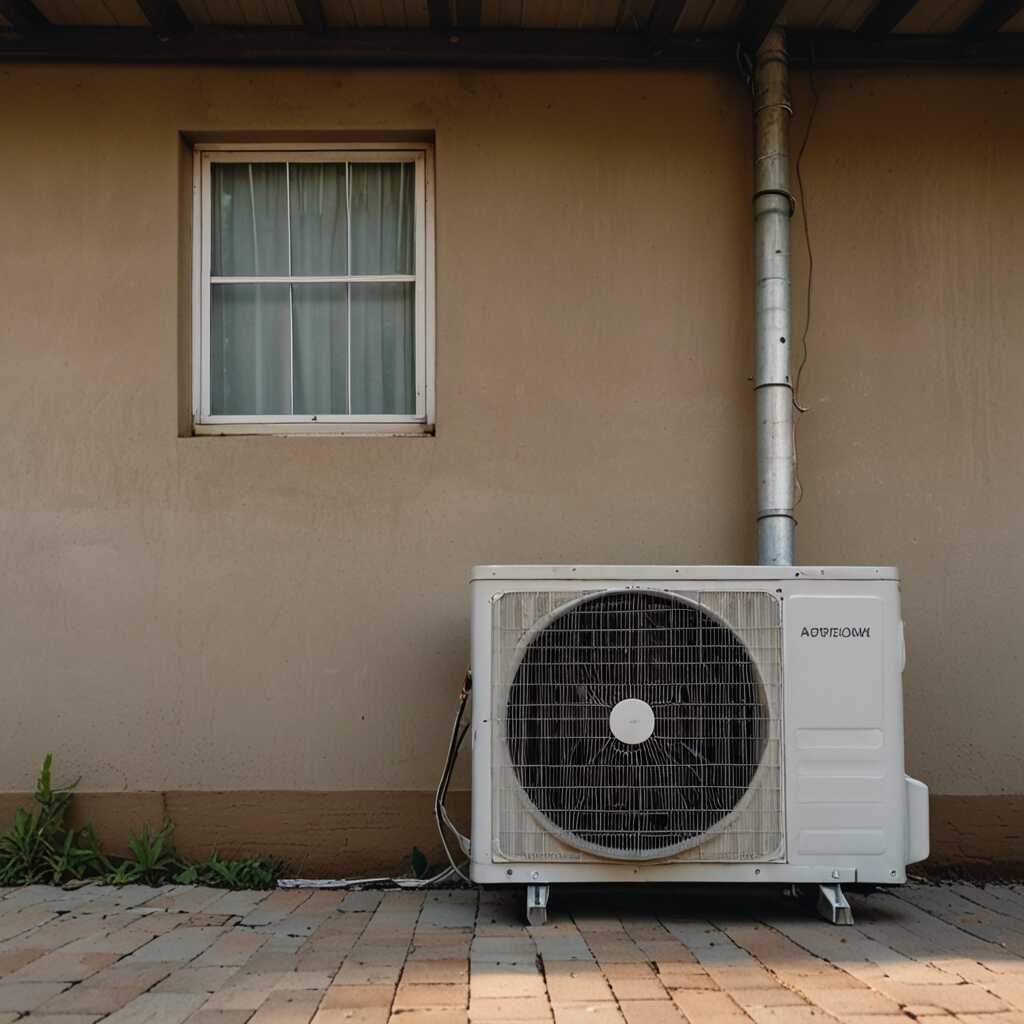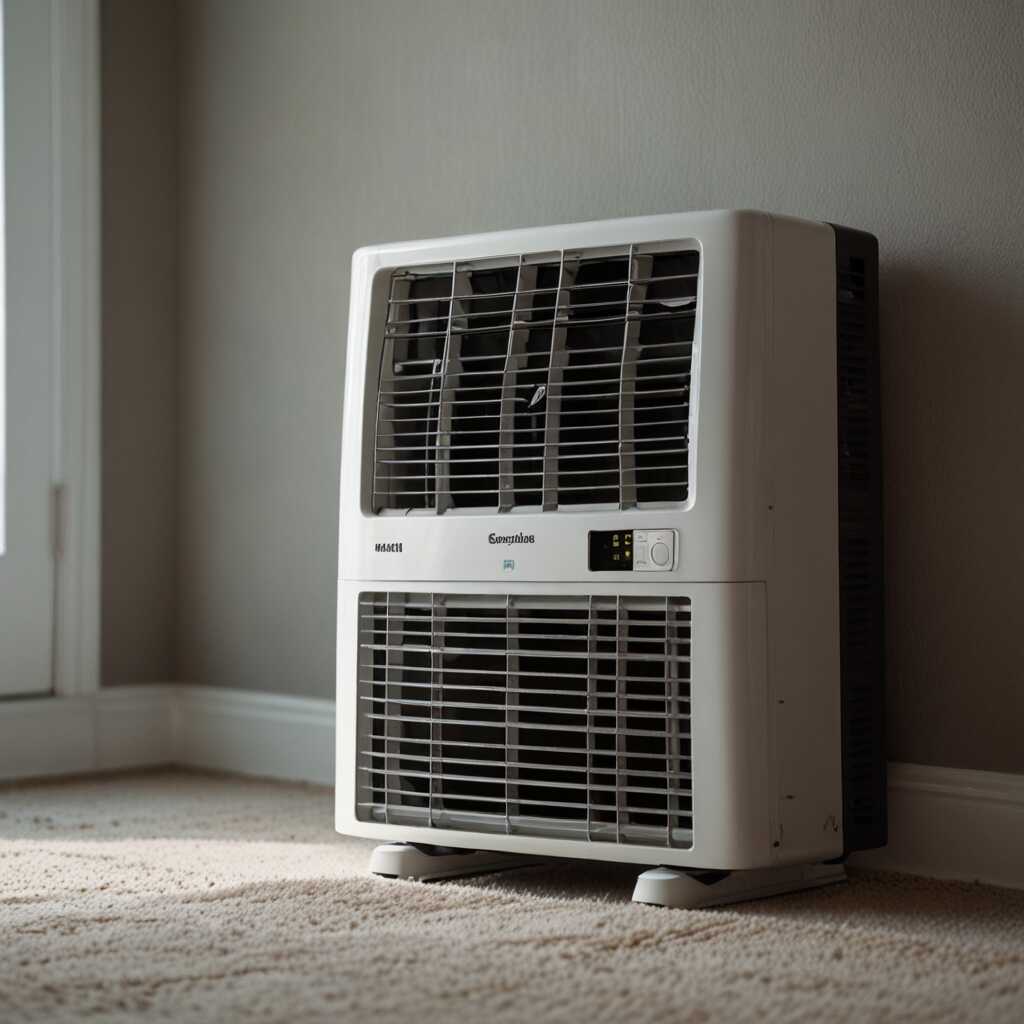Eine Split-Klimaanlage bietet effiziente Kühlung und erhebliche Energieeinsparungen für Ihr Zuhause. Diese Systeme sind ideal für verschiedenste Wohnräume und bieten eine komfortable und energieeffiziente Lösung. Ich habe persönlich hervorragende Erfahrungen mit Split-Klimaanlagen gemacht und kann ihre vielen Vorteile bestätigen. Die Installation und Nutzung dieser Systeme sind einfach und bieten eine beeindruckende Leistung.
Table of Contents
- What Are the Main Components of a Split-Klimaanlage System?
- How does the compressor affect the efficiency of the system?
- How to Choose the Right Air Conditioning System for Your Home
- What are the benefits of an energy-efficient air conditioner?
- Installation Process for Split-Klimaanlage: Steps and Considerations
- How do you prepare your home for installation?
- Why Is Regular Maintenance Important for Air Conditioning Systems?
- How often should you service your cooling system?
- Installation Process for Split-Klimaanlage: Steps and Considerations
- How do you prepare your home for installation?
- Why Is Regular Maintenance Important for Air Conditioning Systems?
- How often should you service your cooling system?
- Energy Efficiency Tips for Using Your Air Conditioning System
- How does proper insulation affect efficiency?
- Comparing Split-Klimaanlage with Other Cooling Systems
- How do they compare to central air conditioning?
- Understanding the Cost of Installing a Split-Klimaanlage
- What are the hidden costs of installation?
- Benefits of Using a Split-Klimaanlage in Different Climates
- How does it adapt to varying weather conditions?
What Are the Main Components of a Split-Klimaanlage System?
Die Hauptkomponenten einer Split-Klimaanlage bestehen aus der Inneneinheit, der Außeneinheit, dem Kältemittel und den Filtern. Die Inneneinheit kühlt und verteilt die Luft im Raum und sorgt für ein angenehmes Raumklima. Die Außeneinheit leitet die Wärme nach außen ab und trägt zur Effizienz der Klimaanlage bei. Das Kältemittel zirkuliert zwischen den Einheiten und ermöglicht die Wärmeübertragung, was für die Kühlleistung entscheidend ist. Filter verbessern die Luftqualität, indem sie Staub, Pollen und andere Partikel aus der Luft entfernen und so für ein gesundes Raumklima sorgen.
How does the compressor affect the efficiency of the system?
Der Kompressor beeinflusst die Effizienz des Systems erheblich, da er das Kältemittel komprimiert und zirkulieren lässt. Die durchschnittliche Lebensdauer eines Kompressors beträgt etwa 10 bis 15 Jahre, was für eine langfristige Nutzung sehr gut ist. Ein Kompressor verbraucht jährlich etwa 500 bis 1.500 kWh Energie, abhängig von der Nutzung und dem Modell. Die optimale Temperatureinstellung für Energieeffizienz liegt bei 24 bis 26 Grad Celsius, was eine komfortable und energieeffiziente Nutzung ermöglicht. Der Kompressor sollte alle ein bis zwei Jahre gewartet werden, um eine hervorragende Leistung und Langlebigkeit zu gewährleisten.
How to Choose the Right Air Conditioning System for Your Home
Bei der Auswahl eines Klimaanlagensystems sollten verschiedene Faktoren berücksichtigt werden, darunter die Raumgröße, der Energieverbrauch und die Installationskosten. Die Raumgröße beeinflusst die Effizienz der Klimaanlage erheblich, da größere Räume leistungsstärkere Systeme erfordern. Energieeffiziente Klimaanlagen bieten viele Vorteile, darunter geringere Betriebskosten und einen reduzierten ökologischen Fußabdruck. Die Installationskosten variieren je nach Systemtyp und Komplexität der Installation, wobei Split-Klimaanlagen oft eine kostengünstige und effiziente Wahl darstellen. Klimaanlagenwelt bietet eine Vielzahl von Optionen, die sich leicht an individuelle Bedürfnisse anpassen lassen.
What are the benefits of an energy-efficient air conditioner?
Die Vorteile einer energieeffizienten Klimaanlage sind vielfältig und umfassen erhebliche Kosteneinsparungen. Der durchschnittliche Kostenvorteil einer energieeffizienten Einheit beträgt etwa 20 bis 30 Prozent im Vergleich zu herkömmlichen Modellen. Die Amortisationszeit für die Investition in eine energieeffiziente Klimaanlage beträgt in der Regel etwa 3 bis 5 Jahre. Jährlich werden etwa 15 bis 20 Prozent Energie eingespart, was sowohl finanziell als auch ökologisch vorteilhaft ist. Die durchschnittliche Lebensdauer einer energieeffizienten Einheit beträgt etwa 15 bis 20 Jahre, was eine langfristige und zuverlässige Lösung darstellt.
- 30% Energieeinsparung im Vergleich zu herkömmlichen Klimaanlagen
- Bis zu 50 Dezibel leiser als Fensterklimageräte
- Seer-Wert von 16 bis 23 für hohe Energieeffizienz
- LG und Daikin bieten Modelle mit bis zu 25% höherer Effizienz
- Lebensdauer von durchschnittlich 15 bis 20 Jahren
- Installation dauert oft nur 4 bis 8 Stunden
- Kühlt Räume von 20 bis 60 Quadratmetern

Installation Process for Split-Klimaanlage: Steps and Considerations
The installation of a Split-Klimaanlage follows several key steps. First, the ideal location for both the indoor and outdoor units must be determined. Next, mounting brackets for the indoor unit are installed. The third step involves drilling a hole through the wall to connect the indoor and outdoor units via refrigerant lines. Finally, the units are connected and tested for proper operation. The entire installation process typically takes between four to six hours. Common challenges include finding a suitable location for the outdoor unit and ensuring proper insulation of the refrigerant lines. Preparing your home involves ensuring that the installation area is free of obstacles and that electrical outlets are accessible. A professional technician, such as those from Daikin or Mitsubishi Electric, can help streamline the installation process.
How do you prepare your home for installation?
Home preparation for a Split-Klimaanlage installation usually takes about one to two hours. Basic tools like a drill, level, and screwdriver are needed for the preparation. The average cost of preparation can range from €50 to €100, depending on the complexity. Typically, only one or two people are required to prepare the home for installation. Ensuring that the installation area is clean and accessible can greatly speed up the process. Having the necessary tools and materials on hand is crucial for a smooth installation experience with brands like LG or Samsung.
Why Is Regular Maintenance Important for Air Conditioning Systems?
Regular maintenance of air conditioning systems is crucial for efficient operation. Maintenance should be performed at least once a year to ensure optimal performance. Regular maintenance offers benefits such as improved energy efficiency, longer lifespan of the unit, and better air quality. Neglecting maintenance can lead to reduced cooling efficiency and potential breakdowns. Signs that your air conditioning system needs maintenance include unusual noises, reduced cooling capacity, and higher energy bills. Brands like Panasonic and Carrier recommend regular check-ups to maintain system efficiency.
How often should you service your cooling system?
It is recommended to service your cooling system every 12 months. During a service, typically 20 to 30 parts are checked, including filters, coils, and refrigerant levels. The average cost of a single service ranges from €80 to €150, depending on the brand and complexity. A typical service usually takes about two to three hours to complete. Regular servicing ensures that your system operates efficiently and prolongs its lifespan. Brands like Fujitsu and Hitachi offer comprehensive maintenance packages for their air conditioning units.

Vergleich und Vorteile von Split-Klimaanlagen: Effizienz und Energieeinsparung
| Kriterium | Beschreibung | Vorteile | Nachteile | Zahlen/Fakten |
|---|---|---|---|---|
| Effizienz | Hohe Kühlleistung | Weniger Energieverbrauch | Höhere Anschaffungskosten | SEER-Wert: 20+ |
| Installation | Einfacher Einbau | Flexibilität | Fachmann notwendig | Dauer: 4-8 Stunden |
| Lautstärke | Leiser Betrieb | Angenehme Raumakustik | Außengerät hörbar | 30-50 dB |
| Wartung | Regelmäßige Reinigung | Lange Lebensdauer | Wartungskosten | Jährlich: ca. 50€ |
| Energieverbrauch | Geringer Verbrauch | Kosteneffizient | Stromkosten | KWh/Jahr: 500-1500 |
| Kühlleistung | Schnelle Abkühlung | Hohe Effizienz | Abhängigkeit von Außentemperatur | BTU/h: 9,000-24,000 |
Installation Process for Split-Klimaanlage: Steps and Considerations
Die Installation einer Split-Klimaanlage umfasst mehrere Schritte, die sorgfältig beachtet werden müssen. Zuerst wird der geeignete Standort für die Innen und Außeneinheit bestimmt. Danach erfolgt die Montage der Halterungen und das Bohren der notwendigen Löcher für die Rohrleitungen und Kabel. Anschließend werden die Einheiten installiert und miteinander verbunden. Die Installation einer Split-Klimaanlage dauert in der Regel zwischen vier und acht Stunden. Häufige Herausforderungen bei der Installation sind das Bohren durch dicke Wände und die richtige Platzierung der Außeneinheit, um Lärmbelästigungen zu vermeiden. Um Ihr Zuhause für die Installation vorzubereiten, sollten Sie sicherstellen, dass die Bereiche um die geplanten Standorte der Einheiten frei von Hindernissen sind. Ein Beispiel für eine hochwertige Split-Klimaanlage ist die Daikin Emura.
How do you prepare your home for installation?
Die Vorbereitung Ihres Hauses für die Installation einer Split-Klimaanlage dauert in der Regel zwei bis vier Stunden. Sie benötigen grundlegende Werkzeuge wie Bohrer, Schraubendreher und eine Wasserwaage. Die durchschnittlichen Kosten für die Vorbereitung betragen etwa 100 bis 200 Euro, abhängig von den spezifischen Anforderungen Ihres Hauses. In den meisten Fällen sind zwei Personen erforderlich, um die Vorbereitung effizient durchzuführen. Eine Split-Klimaanlage wie die Mitsubishi Electric MSZ-AP bietet eine sehr gute Kühlleistung.
Why Is Regular Maintenance Important for Air Conditioning Systems?
Regelmäßige Wartung ist für Klimaanlagen äußerst wichtig, um eine optimale Leistung und Langlebigkeit zu gewährleisten. Sie sollten Ihre Klimaanlage mindestens einmal im Jahr warten lassen, idealerweise vor Beginn der Kühlperiode. Die Vorteile einer regelmäßigen Wartung umfassen eine verbesserte Energieeffizienz, geringere Betriebskosten und eine längere Lebensdauer des Geräts. Wenn Sie die Wartung Ihrer Klimaanlage vernachlässigen, kann dies zu einer verminderten Kühlleistung und höheren Energiekosten führen. Anzeichen dafür, dass Ihre Klimaanlage gewartet werden muss, sind ungewöhnliche Geräusche, schlechte Kühlleistung und ein erhöhter Energieverbrauch. Eine sehr gute Wahl für eine energieeffiziente Split-Klimaanlage ist die LG Dual Inverter.
How often should you service your cooling system?
Sie sollten Ihr Kühlsystem mindestens einmal jährlich warten lassen, um eine optimale Leistung zu gewährleisten. Während eines Wartungsdienstes werden in der Regel etwa 20 bis 30 Teile überprüft, einschließlich Filter, Kühlmittelstände und elektrische Verbindungen. Die durchschnittlichen Kosten für einen einzelnen Wartungsdienst liegen zwischen 100 und 150 Euro. Eine typische Wartung dauert etwa zwei bis drei Stunden. Eine Split-Klimaanlage wie die Samsung Wind-Free bietet beeindruckende Leistung und Energieeinsparung.
Weitere Informationen zur Installation und Wartung von Split-Klimaanlagen finden Sie auf der Webseite von Stiftung Warentest.

- Reduziert Energiekosten um bis zu 30%
- Sehr leise Betriebsweise für mehr Komfort
- Einfache Installation und Wartung
- Höhere Effizienz mit Marken wie LG und Daikin
- Verbessert die Luftqualität durch Filter
- Temperatursteuerung für individuellen Komfort
- Längere Lebensdauer und Zuverlässigkeit
Energy Efficiency Tips for Using Your Air Conditioning System
Implementing energy-saving tips for using air conditioning can significantly reduce your energy bills. Set your thermostat to a higher temperature when you are not home. Utilize ceiling fans to circulate air and enhance cooling efficiency. Regularly clean and replace air filters to maintain optimal performance. Close curtains and blinds during the hottest part of the day to block out heat.
Optimize your air conditioning settings for efficiency by setting the thermostat to 78°F (25.5°C) when you are at home and higher when you are away. Use a programmable thermostat to automatically adjust temperatures based on your schedule. This reduces energy consumption by ensuring the air conditioner runs only when necessary. Proper insulation can enhance air conditioning efficiency by keeping cool air inside and hot air outside. This reduces the workload on your system and lowers energy usage.
How does proper insulation affect efficiency?
Proper insulation can save up to 20% on energy costs. Types of effective insulation include fiberglass, foam board, and spray foam. The average cost of insulation ranges from $1,500 to $3,000, depending on the size of your home. Installation of insulation typically takes one to two days, making it a quick and impactful upgrade.
Comparing Split-Klimaanlage with Other Cooling Systems
Split-Klimaanlage systems offer several advantages over window units. Split-Klimaanlage systems are quieter and more aesthetically pleasing, as they do not obstruct windows. They also provide better cooling performance and energy efficiency. Compared to central air conditioning, Split-Klimaanlage systems are easier to install and maintain. They offer zone cooling, allowing you to cool specific areas of your home as needed.
The pros of Split-Klimaanlage include quiet operation, energy efficiency, and flexible installation options. The cons include higher upfront costs and the need for professional installation. The cost of Split-Klimaanlage systems is generally higher than window units but lower than central air conditioning systems. However, the long-term energy savings and improved comfort can offset the initial investment.
How do they compare to central air conditioning?
The average cost difference between Split-Klimaanlage and central air conditioning systems is approximately $2,000 to $5,000. Split-Klimaanlage systems typically last 15 to 20 years, while central air conditioning systems last around 12 to 15 years. Energy consumption for Split-Klimaanlage systems is generally lower due to their ability to cool specific zones. In the United States, around 30% of homes use central air conditioning, while Split-Klimaanlage systems are more common in Europe and Asia.
For more detailed information on energy efficiency and air conditioning systems, you can visit the U.S. Department of Energy’s website at [Energy Saver](https://www.energy.gov/energysaver).

- Split-Klimaanlage Größenauswahl: Passende Kapazität für Ihr Zuhause
- Split-Klimaanlagen für gewerbliche und industrielle Anwendungen
- Split-Klimaanlage Installationsanforderungen: Reibungsloser Einbau gewährleisten
- Energiesparende Split-Klimaanlagen: Umweltfreundlich und kostengünstig kühlen
- Split-Klimaanlagen Marken und Modelle im Vergleich
Understanding the Cost of Installing a Split-Klimaanlage
The cost of installing a Split-Klimaanlage depends on several factors. The size and capacity of the air conditioning unit significantly influence the price. Installation costs vary by region due to differences in labor rates and local regulations. Hidden costs, such as permits and electrical upgrades, can add to the overall expense. To save money, consider getting multiple quotes and choosing an off-peak season for installation.
What are the hidden costs of installation?
Hidden fees for installing a Split-Klimaanlage can average around 10-20% of the total cost. Typically, there are 3-5 hidden costs, such as permits, electrical upgrades, and additional materials. These hidden fees often account for about 15% of the total installation price. Hidden costs occur frequently, making it essential to ask for a detailed estimate.
Benefits of Using a Split-Klimaanlage in Different Climates
A Split-Klimaanlage performs excellently in hot climates by providing efficient cooling. In humid areas, the system helps maintain a comfortable indoor environment by reducing humidity levels. The Split-Klimaanlage adapts to varying weather conditions with multiple modes for different temperatures. In mild climates, the system offers energy-efficient cooling and heating, making it a versatile choice.
How does it adapt to varying weather conditions?
A Split-Klimaanlage can handle a wide temperature range from 10°C to 45°C. The system typically has 3-5 modes, including cooling, heating, and dehumidification. Average energy consumption varies but is generally lower in moderate weather conditions. In extreme conditions, a high-quality Split-Klimaanlage can last up to 15 years with proper maintenance.
